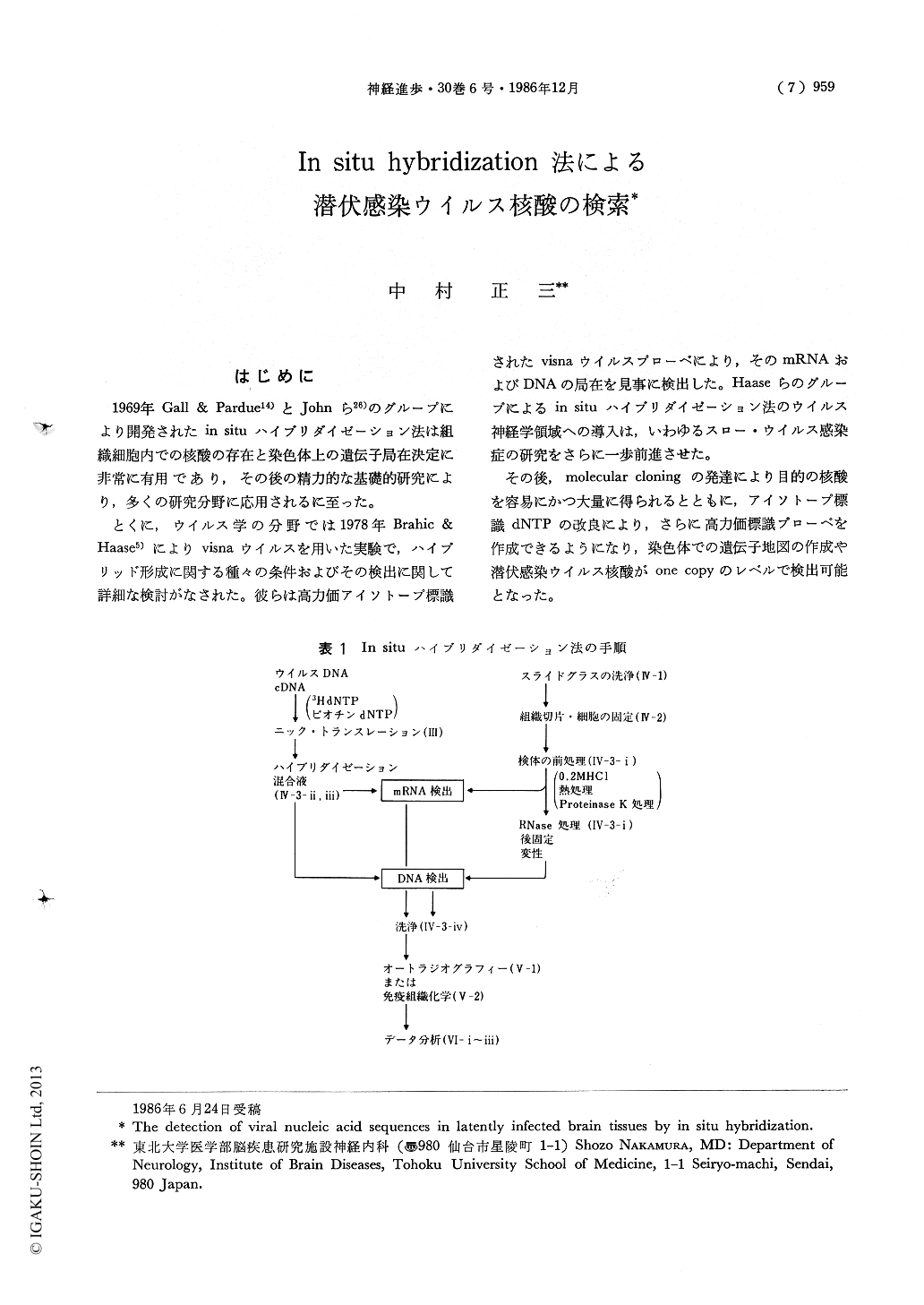Japanese
English
- 有料閲覧
- Abstract 文献概要
- 1ページ目 Look Inside
はじめに
1969年Gall & Pardue14)とJohnら26)のグループにより開発されたin situハイブリダイゼーション法は組織細胞内での核酸の存在と染色体上の遺伝子局在決定に非常に有用であり,その後の精力的な基礎的研究により,多くの研究分野に応用されるに至った。
とくに,ウイルス学の分野では1978年Brahic & Haase5)によりvisnaウイルスを用いた実験で,ハイブリッド形成に関する種々の条件およびその検出に関して詳細な検討がなされた。彼らは高力価アイソトープ標識されたvisnaウイルスブローベにより,そのmRNAおよびDNAの局在を見事に検出した。Haaseらのグループによるin situハイブリダイゼーション法のウイルス神経学領域への導入は,いわゆるスロー・ウイルス感染症の研究をさらに一歩前進させた。
The in situ hybridization was initially devised and introduced by Gall and Pardue in 1969.
This procedure has been recognized to be a very useful and powerful technique for the detection of viral nucleic acids and gene in cells. Moreover, with marked advances in hybridization in situ and molecular cloning, single copies of viral genomes can be detected in cells or single genes in chomosomes.

Copyright © 1986, Igaku-Shoin Ltd. All rights reserved.


